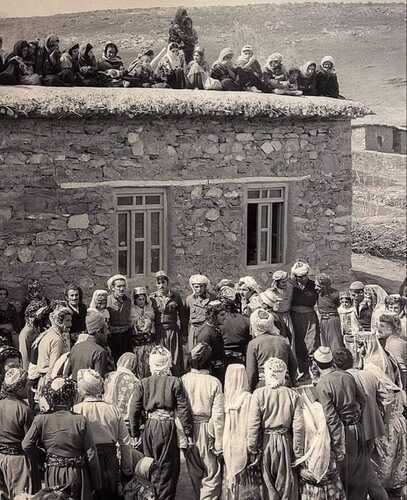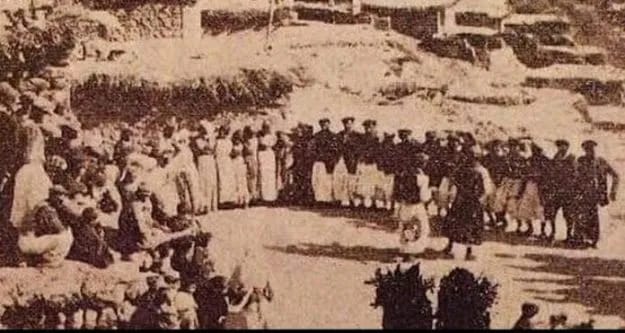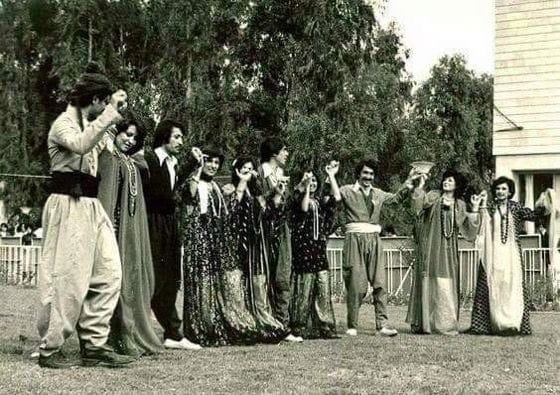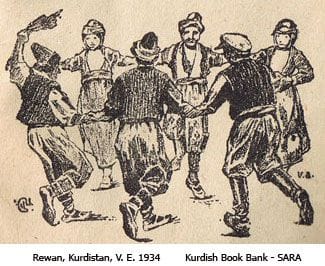Kurdish dances are also part of Kurdish folklore; we can say that all the old things that a society of several million people can identify as a nation are considered folklore. Many Kurdish researchers believe that all ancient things that have a specific philosophy behind them and are the identity of society are considered folklore.
In fact, Kurdish dance is not known as simple and meaningless. Every Kurdish dance may have a philosophy behind it; I tried to explain the philosophy of some Kurdish dances, the philosophy of Sarchopi, Bnchopi, and shouting in Kurdish dances, and the philosophy of holding hands of boys and girls in the northern part of East part of Kurdistan.

Kurdish dance is one of the most beautiful dances in the Middle East and consists of several dances. Kurdish dance is full of meaning and is divided into several branches, each with its own philosophy. The philosophy of dance reflects the events and experiences of the Kurdish people. One of the symbols of the Kurdish people's existence is Kurdish dance. Kurdish dances and celebrations are full of old history and in fact, these dances are not created from simple dances and are full of history.
Some Kurdish dances have a very old history, some of them date back 2000 years, and many of them have a long history. Many historians say that the history of some Kurdish dances dates back to the time when Kurds settled in the Zagros. There are many examples of this document, for example, in the regions of Kermashan and Ilam in the east and Amed in the North part of Kurdistan, there are several stones with shapes carved on them; In Ilam, there is a stone of the castle of Ali Kash with a wedding table carved on it, which dates back to the Kurdish state of the Medes.

There are several special names for Kurdish dance, such as Dilan, Shayi, Govand, Dawat, and some other names; each region of Kurdistan has its own name.
I met Shahram Hamidzadeh, an expert on Kurdish dance, and asked him about the names of Kurdish dance. He said: “There are many names for this Kurdish art; in the regions whose dialect is Kurmanji called it Dawat, Dilan, Govand, and Shahi. In the regions whose dialect is Sorani called it Halparke, Zamawand, Bazm, and many other names. But in my opinion and according to the documents, the best name for this is to be called Chope. Why call it Chope? In all four parts of Kurdistan, when a party is held, the first person is called Chope and the last person is called Bnchope. Where does this word come from? In Kurmanji, when someone is sent to bring something and ask what happened to them? They say Cho Pe (s/he went after it). It is known that in the past, some people would gather around each other and one of them would go and someone would be sent after them, and several others would follow each other in this way until they finally held hands ... Then they held hands and invited them. In Sorani, it is called Chopi and in Kurmanji, it is called Chope. That's why I think the best name for this Kurdish art is Chope.”

There are more than 100 types of Kurdish dances in Kurdistan and each region has its own dance. There are more than 23 dances in the northern part of the eastern part of Kurdistan that are still danced. There are many dance groups in Kurdistan that are trying to preserve the old dances.
To be continued...








